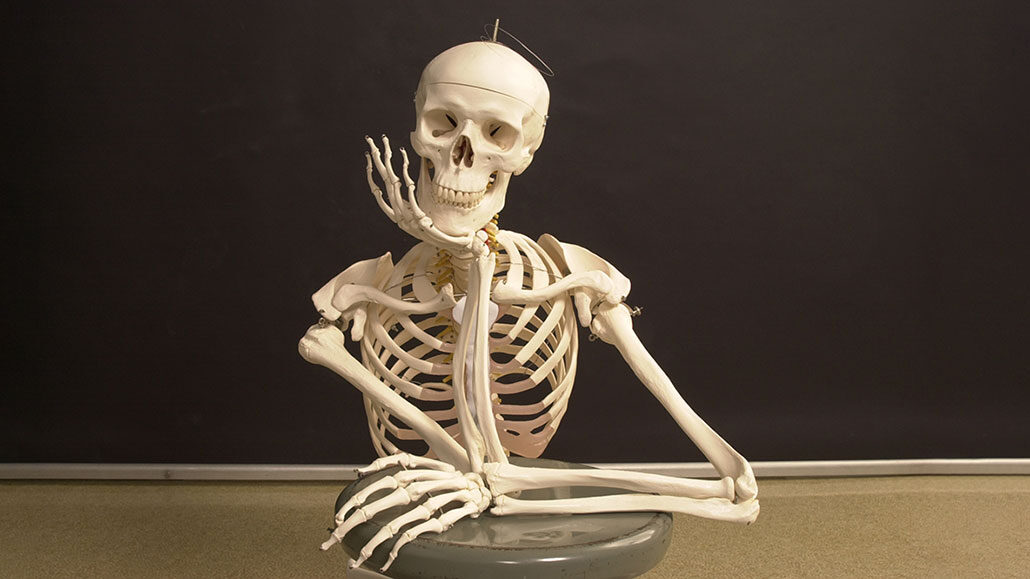appetite: A desire to eat or drink, often because of hunger.
archaeology: (also archeology) The study of human history and prehistory through the excavation of sites and the analysis of artifacts and other physical remains. Those remains can range from housing materials and cooking vessels to clothing and footprints. People who work in this field are known as archaeologists.
base: (in chemistry) A chemical that produces hydroxide ions (OH-) in a solution. Basic solutions are also referred to as alkaline. (in genetics) A shortened version of the term nucleobase. These bases are building blocks of DNA and RNA molecules.
bioengineer: Someone who applies engineering to solve problems in biology or in systems that will use living organisms.
biologist: A scientist involved in the study of living things.
calcium: A chemical element which is common in minerals of the Earth’s crust and in sea salt. It is also found in bone mineral and teeth, and can play a role in the movement of certain substances into and out of cells.
calcium carbonate: The main chemical compound in limestone, a rock made from the tiny shells of ancient marine organisms. Its formula is CaCO3 (meaning it contains one calcium atom, one carbon atom and three oxygen atoms). It’s also the active ingredient in some antacid medicines (ones used to neutralize stomach acids).
cell: The smallest structural and functional unit of an organism. Typically too small to see with the unaided eye, it consists of a watery fluid surrounded by a membrane or wall. Depending on their size, animals are made of anywhere from thousands to trillions of cells. Most organisms, such as yeasts, molds, bacteria and some algae, are composed of only one cell.
chemical: A substance formed from two or more atoms that unite (bond) in a fixed proportion and structure. For example, water is a chemical made when two hydrogen atoms bond to one oxygen atom. Its chemical formula is H2O. Chemical also can be an adjective to describe properties of materials that are the result of various reactions between different compounds.
chemical signal: A message made up of molecules that get sent from one place to another. Bacteria and some animals use these signals to communicate.
gravity: The force that attracts anything with mass, or bulk, toward any other thing with mass. The more mass that something has, the greater its gravity.
hormone: (in zoology and medicine) A chemical produced in a gland and then carried in the bloodstream to another part of the body. Hormones control many important body activities, such as growth. Hormones act by triggering or regulating chemical reactions in the body. (in botany) A chemical that serves as a signaling compound that tells cells of a plant when and how to develop, or when to grow old and die.
hunter-gatherer: A cultural group that feeds itself through hunting, fishing and gathering wild produce (such as nuts, seeds, fruits, leaves, roots and other edible plant parts). They can be somewhat nomadic and do not rely on agriculture for their foods.
Jurassic: Lasting from about 200 million to 145.5 million years ago, it’s the middle period of the Mesozoic Era. This was a time when dinosaurs were the dominant form of life on land.
kidney: Each in a pair of organs in mammals that filters blood and produces urine.
mammal: A warm-blooded animal distinguished by the possession of hair or fur, the secretion of milk by females for feeding their young, and (typically) the bearing of live young.
marrow: (in physiology and medicine) Spongy tissue that develops inside of bones. Most red blood cells, infection-fighting white blood cells and blood platelets form within the marrow.
mass: A number that shows how much an object resists speeding up and slowing down — basically a measure of how much matter that object is made from.
mean, obtained by adding the data and dividing by the number of data points.
microgravity: Gravity that is a fraction of the force experienced at sea level on Earth.
muscle: A type of tissue used to produce movement by contracting its cells, known as muscle fibers. Muscle is rich in protein, which is why predatory species seek prey containing lots of this tissue.
organ: (in biology) Various parts of an organism that perform one or more particular functions. For instance, an ovary is an organ that makes eggs, the brain is an organ that makes sense of nerve signals and a plant’s roots are organs that take in nutrients and moisture.
prehistoric: An adjective for something that happened tens of thousands to millions of years ago, periods before people began deliberately recording events.
tissue: Made of cells, it is any of the distinct types of materials that make up animals, plants or fungi. Cells within a tissue work as a unit to perform a particular function in living organisms. Different organs of the human body, for instance, often are made from many different types of tissues.








